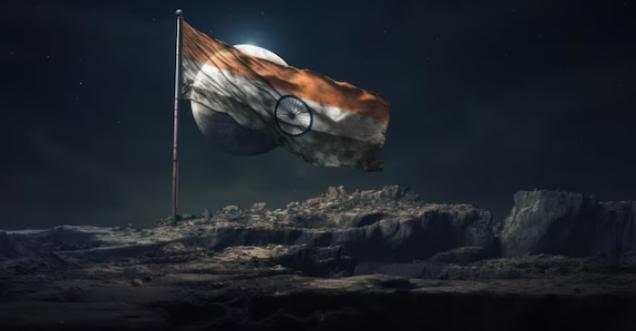
Can I See the Flag On the Moon Through My Telescope
Telescopes on Earth, including the Hubble Space Telescope, cannot capture images of the flags planted on the Moon's surface by astronauts. The flags are too small to be seen by any telescope123. The laws of optics come into play here. The flag on the Moon is approximately 4 feet (125 cm) long. You would need an optical wavelength telescope with a diameter of around 200 meters to see it. The Hubble Telescope's 2.4-meter mirror has a resolution of 0.024" in ultraviolet light, translating to approximately 141 feet (43 meters) at the Moon's distance. In visible light, the resolution becomes 0.05", close to 300 feet. As a result, a 4-foot flag would be much too small to be seen by the HST.
Moreover, planting the flag on the Moon differed from planting it on Earth. With virtually no atmosphere and wind on the Moon, flags that fly freely on Earth would hang like limp cloth in the Moon's environment. American engineers had to come up with a different flagpole design. On a flagpole meant for Earth, the flag is attached at the top and bottom of the vertical section closest to the pole. However, a lunar flag is anchored to the pole only at the bottom, with a horizontal crossbar at the top mainly holding it in place.
The flags from all six Apollo missions are still on the Moon. Images taken by NASA's Lunar Reconnaissance Orbiter (LRO) in 2012 show that at least five out of six flags still stand. However, due to the lack of an atmosphere that blocks the sun's rays, ultraviolet light wouldn't have taken long to eat away at the dye and bleach the flags white. The Apollo 11 flag left on the Moon is no longer standing; it has been flat on the ground since Aldrin and Neil Armstrong lifted off.
No, you cannot see the flag on the Moon through a telescope from Earth. The flags planted on the Moon during the Apollo missions are relatively small and were not designed to be visible from Earth. Here are a few reasons why:
- Size: The flags placed on the Moon's surface by the Apollo astronauts are only about 3 feet by 5 feet (approximately 91 cm by 152 cm) in size. They are relatively small compared to the vast distances between the Moon and Earth.
- Distance: The Moon is, on average, about 238,855 miles (384,400 kilometres) away from Earth. This considerable distance, along with the relatively small size of the flags, makes them virtually impossible to see from Earth without extremely powerful telescopes, which are not available to the general public.
- Lack of Detail: Even with the most advanced telescopes available, the resolution and clarity needed to discern small objects on the Moon's surface, such as the flags, are beyond the capabilities of consumer-grade telescopes.
- Environmental Factors: Earth's atmosphere also challenges observing distant objects. Atmospheric turbulence, light pollution, and other factors further limit the ability to see fine details on the Moon's surface.
While it is possible to observe the Moon's general features, such as craters, mountains, and large lunar maria, with a decent amateur telescope, seeing specific objects like the flags or the Apollo lunar modules is not feasible without specialized equipment and is generally the domain of lunar orbiters and spacecraft sent by space agencies for close-up lunar exploration.

















